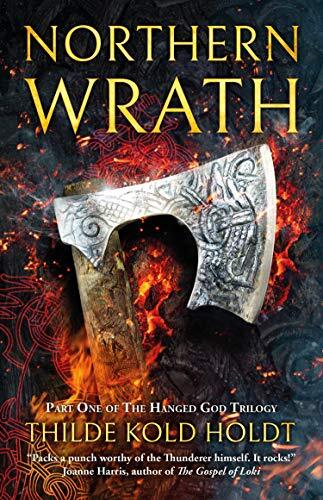Beth Tabler's Blog, page 178
July 4, 2022
Review – The Song of Achilles by Madeline Miller
I was very moved by this book on an emotional level, and that is the sign of a fantastic writer.
 Lover of all manner of mythology that I am, it took zero persuasion for me to read Madeline Miller’s debut novel, The Song of Achilles, a retelling of the famous poem the Iliad, traditionally believed to be written by the legendary Homer.
Lover of all manner of mythology that I am, it took zero persuasion for me to read Madeline Miller’s debut novel, The Song of Achilles, a retelling of the famous poem the Iliad, traditionally believed to be written by the legendary Homer.
The fact that I already read and loved Circe, the mega-bestselling second, and highly acclaimed book by the same writer, only sealed the deal. I had long planned to read this book (and everything that the brilliant Miller writes) but #FebruarySheWrote, where I read exclusively female authors who use the pronouns she/her, was the perfect time. This was my last read for #FebruarySheWrote, and I ended things in fine fashion with this amazing novel.
This book has made tons of “best of” lists, and has certainly brought home the trophies. Among them, the book won a 2012 Women’s Prize for Fiction, the 2012 Orange Prize for Fiction, and the 2013 Gaylactic Spectrum Award for Best Novel, just to name a few of the accolades.
After reading the book, I can certainly see why it has racked up the prizes. I stayed up late last night, and spent most of the day today reading the novel, as I had absolutely no desire to put it down. It was incredible!
For those unfamiliar with the Iliad, upon which the book is based, the Iliad is an 8th century work that chronicles the major events of the famed Trojan War. In this massive conflict, a conglomerate of Greek states invaded and besieged the city of Troy. The cause was the affair between Prince Paris of Troy and Helen of Sparta, said to be at the time the world’s most beautiful woman.
Helen was married to King Menelaus of Sparta, but ran off with Paris, seeking refuge in Troy. Using this act as the catalyst for war – though the Greek confederacy also covets Troy for other reasons – Menelaus, urged on by his brother Agamemnon, allies with the other Greek leaders, and compile the notorious great armada of “a thousand ships” to retrieve “the face (Helen) that launched” them. Sailing for Troy, the alliance attacks the city. A ten-year siege ensues.
The legendary scion of gods, Prince Achilles of Phthia, was perhaps the most renown hero amongst a LOT of luminaries (Odysseus, Hector, Ajax, to name a few) mentioned in the Iliad. He is the most skilled warrior in the world, and victory for the Greek confederacy was believed to hinge on his otherworldly talents as a soldier.
Described in the Iliad as being a killing-machine of fiery temper, Achilles is an interesting choice to take centre stage in Miller’s love story, the story of Achilles and Patroclus. Patroclus is mentioned in the Iliad as a dear friend to Achilles, and the only reason Achilles returned to battle and after being insulted by Agamemnon.
After Patroclus is killed by Hector, brother of Paris and said to be the only warrior who might best Achilles, in a fit of rage, Achilles slaughters numerous Trojans, until he gets to Hector. Eventually, the two great rivals duel, but Achilles emerges victorious, and Hector is slain. Still vengeful over Patroclus’ death, Achilles dishonours Hector’s body by hitching it to his chariot, and dragging it three times around the besieged city.
While the Iliad does not mention Achilles death, the follow-up poem the Odyssey, notes he died in battle during the siege, as prophesied. Supposedly, Paris managed to shoot Achilles in his heel, killing the great warrior, and avenging Hector’s death.
Legend holds Achilles was dipped in the River Styx by his mother, the nymph Thetis, making him impervious to harm, and only vulnerable on his heel (where Paris shot him), which Thetis used to hold him while dipping him in the river. Hence of course, the saying “Achilles heel” as being synonymous for an exposure, and the tendon above the heel named for the half-man, half-god.
Miller’s book sticks largely with the Iliad, and builds on the long-held assumption by many historians that Achilles and Patroclus were indeed deeply and passionately in love. The Song of Achilles, is told first person by Patroclus.
Patroclus is also born a prince, and first sets eyes on Achilles at feats of sport, where the unnaturally swift and eerily beautiful Achilles stands out to Patroclus by beating all the other competitors in a foot race, by a very wide margin. The surly and unkind King Menoetius, father of Patroclus, insults his son, who is unathletic. Meneotius uncharitably notes that Achilles is how a son should be, rather than Patroclus.
From that time forward, Patroclus dislikes Achilles. Later, Patroclus is banished from his father’s realm, for killing the son of another nobleman, after being bullied by the other child. Patroclus ends up being sent to the kingdom of Achilles’ father, Pelus. There, Patroclus’ animosity towards Achilles turns into admiration, and then love.
Achilles feels the same, and into adulthood, they maintain their affair, despite the disdain for Patroclus of Achilles’ divine mother, the fearsome Thetis. Patroclus gets in the way, for Thetis, of Achilles’ grand destiny to be the greatest living warrior, and having his name live on throughout the ages due to his role in the coming Trojan War. Thetis plays the role of everyone’s worst in-law nightmare, with magical powers, and a hate-on for Patroclus.
But the real issue is that Achilles is foretold to die in battle if he goes to Troy. He can go, and die in glory and eternal reverence, or live a longer life, without the fame. Patroclus endures the agony of knowing the man he loves greater than life itself is doomed.
This brings a deep poignancy to the story, as we know tragedy will irrevocably cut short the love between the two men. Half-god Achilles also mourns what will come, but handles his grim future with courage and stoicism, except, in turn, when it comes to losing his beloved Patroclus.
The poetic, redolent prose of Miller is certainly worthy of Homer’s original work. And, as with Circe, the book is impeccably researched, and one feels one is back in mythical ancient Greece, a place of gods, nymphs, centaurs, great heroes, and legendary feats.
Apparently, The Song of Achilles was ten years in the making, and Miller takes her time pacing the tale, the way she took some time to complete it. The book reads like a slow-burn romance that remains completely epic in scope, flawless in characterization and ultimately, a masterpiece of literature.
I must also comment on Miller’s touching, tear-inducing foreword. I applaud Miller for one of the reasons she wrote The Song of Achilles. Miller knew that representation of LGBTQ2IA+ stories instruct and enlighten readers not from the community, and allow members from the community to see stories about them, because these stories should be heard, widely known and taught. Using the “Iliad”, a story that remains popular down through the ages, was an excellent vehicle to accomplish this goal.
This has never been more important in (shockingly) a frightening new movement to ban books – including and especially LGBTQ2IA+ books – in the Western world, in the 21st century. Below is an excerpt from Miller’s foreword:
“I wanted to push back hard against the homophobia surrounding discussions of Achilles and Patroclus’ relationship. I wanted my LGBTQIA+ students to know they weren’t alone…from wedding ceremonies to Pride Fest…”
I was very moved by this book on an emotional level, and that is the sign of a fantastic writer. Miller is definitely a fantastic, best-selling writer. If you want to read a sensational novel about Greek mythology, a doomed love affair, and a plaintive, yet brilliant, unique, and engaging representation of allegorical heroes of the past, Song of Achilles should be extremely high on your TBR. Of course, five stars here!
Read Song of AchillesThe post Review – The Song of Achilles by Madeline Miller appeared first on BEFOREWEGOBLOG.
Fantasy and Science Fiction That Features Strong Women or Woman’s Rights
“Don’t let the bastards grind you down.”
Books are glorious as they can stand on the uncharted precipice of “what if” and ask, “What if the world was different?” How would we feel about that? Authors take to pens or keyboards to make sense of the world. And unlike any other genre, SFF allows authors the freedom to ask big questions in creative circumstances. This freedom is how we got stories like The Handmaid’s Tale or Ursula K. Le Guin’s The Left Hand of Darkness that challenged gender roles and biases. Or, She Who Became the Sun by Shelly Parker-Chan that boldly reimagines the rise of the founding emperor of the Ming dynasty. There is true power in the “pen.” It can sway people, change minds, and bend the future.
Due to current events in the US, we as a team came together and selected a few novels that touch on women’s rights or women’s roles. This list is obviously not complete. Its depth and breadth would have to be ten times larger and contain more viewpoints from different cultures and backgrounds. Many of the plights of women including those identifying as female are universal but not all of them. However, this is an excellent selection of books to get one started.
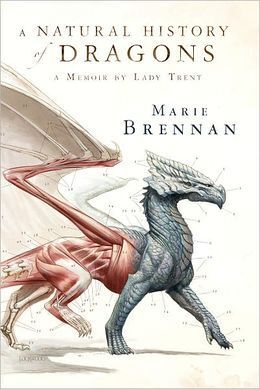
1.A Natural History of DragonsBy Marie Brennan
Do you feel like women are being told where they belong and what they are capable of/ should have access to by people who have no business doing so? Let Lady Trent take you on her journey into the world of science in a society that very much doesn’t want to let her do so.
– Taylor from Maed Between the Pages
About A Natural History of Dragons
You, dear reader, continue at your own risk. It is not for the faint of heart—no more so than the study of dragons itself. But such study offers rewards beyond compare: to stand in a dragon’s presence, even for the briefest of moments—even at the risk of one’s life—is a delight that, once experienced, can never be forgotten. . . .
All the world, from Scirland to the farthest reaches of Eriga, know Isabella, Lady Trent, to be the world’s preeminent dragon naturalist. She is the remarkable woman who brought the study of dragons out of the misty shadows of myth and misunderstanding into the clear light of modern science. But before she became the illustrious figure we know today, there was a bookish young woman whose passion for learning, natural history, and, yes, dragons defied the stifling conventions of her day.
Here at last, in her own words, is the true story of a pioneering spirit who risked her reputation, her prospects, and her fragile flesh and bone to satisfy her scientific curiosity; of how she sought true love and happiness despite her lamentable eccentricities; and of her thrilling expedition to the perilous mountains of Vystrana, where she made the first of many historic discoveries that would change the world forever.
Buy from Amazon

2.The Year of the WitchingBy Alexis Henderson
A dark fantasy story with an oppressive religion that tries to keep our main character Immanuelle from her witch-y heathen female ancestry. But maybe that’s what she needs in the end to find herself.
– Taylor from Maed Between the Pages
About The Year of the Witching
A young woman living in a rigid, puritanical society discovers dark powers within herself in this stunning, feminist fantasy debut.
In the lands of Bethel, where the Prophet’s word is law, Immanuelle Moore’s very existence is blasphemy. Her mother’s union with an outsider of a different race cast her once-proud family into disgrace, so Immanuelle does her best to worship the Father, follow Holy Protocol, and lead a life of submission, devotion, and absolute conformity, like all the other women in the settlement.
But a mishap lures her into the forbidden Darkwood surrounding Bethel, where the first prophet once chased and killed four powerful witches. Their spirits are still lurking there, and they bestow a gift on Immanuelle: the journal of her dead mother, who Immanuelle is shocked to learn once sought sanctuary in the wood.
Fascinated by the secrets in the diary, Immanuelle finds herself struggling to understand how her mother could have consorted with the witches. But when she begins to learn grim truths about the Church and its history, she realizes the true threat to Bethel is its own darkness. And she starts to understand that if Bethel is to change, it must begin with her.
Buy from Amazon
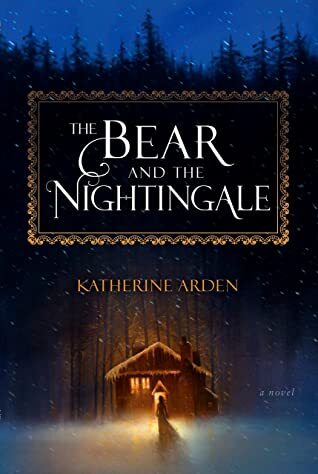
3.The Bear and the Nightingaleby Katherine Arden
Poetically written and based on Russian folklore, our main character Vasilisa finds her agency through exploring her pagan historical roots. The touch of magic is everywhere if you know where to look.
– Taylor from Maed Between the Pages
About The Bear and the Nightingale
Katherine Arden’s best-selling debut novel spins an irresistible spell as it announces the arrival of a singular talent with a gorgeous voice.
“A beautiful deep-winter story, full of magic and monsters and the sharp edges of growing up.” (Naomi Novik, best-selling author of Uprooted)
Winter lasts most of the year at the edge of the Russian wilderness, and in the long nights, Vasilisa and her siblings love to gather by the fire to listen to their nurse’s fairy tales. Above all, Vasya loves the story of Frost, the blue-eyed winter demon. Wise Russians fear him, for he claims unwary souls, and they honor the spirits that protect their homes from evil.
Then Vasya’s widowed father brings home a new wife from Moscow. Fiercely devout, Vasya’s stepmother forbids her family from honoring their household spirits, but Vasya fears what this may bring. And indeed, misfortune begins to stalk the village.
But Vasya’s stepmother only grows harsher, determined to remake the village to her liking and to groom her rebellious stepdaughter for marriage or a convent. As the village’s defenses weaken and evil from the forest creeps nearer, Vasilisa must call upon dangerous gifts she has long concealed – to protect her family from a threat sprung to life from her nurse’s most frightening tales.
Buy from Amazon

4.Monstressby Marjorie M. Liu and Sana Takeda
For those who may feel powerless at the moment, find catharsis in a world run by matriarchal societies and chock full of morally grey characters that live by their own moral code.
– Taylor from Maed Between the Pages
About Monstress
Steampunk meets Kaiju in this original fantasy epic for mature readers, as young Maika risks everything to control her psychic link with a monster of tremendous power, placing her in the center of a devastating war between human and otherworldly forces.
Buy from Amazon
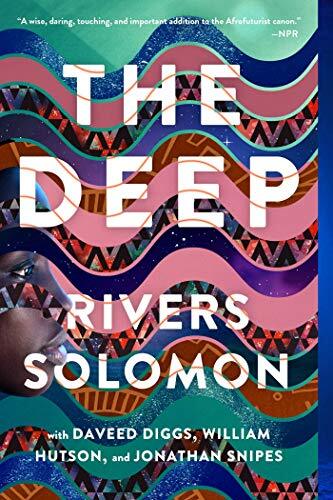
5.The Deepby Rivers Solomon, Daveed Diggs, William Hutson, and Jonathan Snipes
What would happen if the pregnant women thrown overboard during the transatlantic slave trade gave birth in the ocean? How would their stories be remembered and passed down through the generations? Solomon explores this beautifully through poetic prose and mermaids.
– Taylor from Maed Between the Pages
About The Deep
Octavia E. Butler meets Marvel’s Black Panther in The Deep, a story rich with Afrofuturism, folklore, and the power of memory, inspired by the Hugo Award–nominated song “The Deep” from Daveed Diggs’s rap group Clipping.
Yetu holds the memories for her people—water-dwelling descendants of pregnant African slave women thrown overboard by slave owners—who live idyllic lives in the deep. Their past, too traumatic to be remembered regularly is forgotten by everyone, save one—the historian. This demanding role has been bestowed on Yetu.
Yetu remembers for everyone, and the memories, painful and wonderful, traumatic and terrible and miraculous, are destroying her. And so, she flees to the surface escaping the memories, the expectations, and the responsibilities—and discovers a world her people left behind long ago.
Yetu will learn more than she ever expected about her own past—and about the future of her people. If they are all to survive, they’ll need to reclaim the memories, reclaim their identity—and own who they really are.
Buy from Amazon
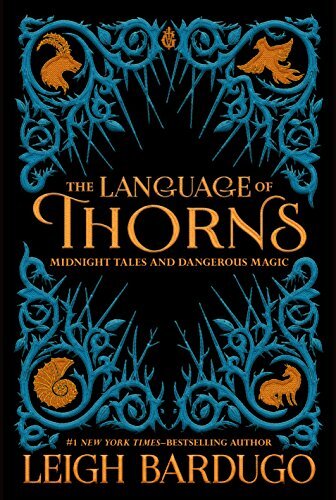
6.The Language of Thornsby Leigh Bardugo
A collection of small stories form the Grishaverse (other reading in this universe not required); many of which focus on women making choices about their own lives- choices that are best for them.
– Taylor from Maed Between the Pages
About The Language of Thorns
See the Grishaverse come to life on screen with Shadow and Bone, now a Netflix original series. Inspired by myth, fairy tale, and folklore, #1 New York Times-bestselling author Leigh Bardugo has crafted a deliciously atmospheric collection of short stories filled with betrayals, revenge, sacrifice, and love. Enter the Grishaverse… Love speaks in flowers. Truth requires thorns. Travel to a world of dark bargains struck by moonlight, of haunted towns and hungry woods, of talking beasts and gingerbread golems, where a young mermaid’s voice can summon deadly storms and where a river might do a lovestruck boy’s bidding but only for a terrible price. Perfect for new readers and dedicated fans, the tales in The Language of Thorns will transport you to lands both familiar and strange—to a fully realized world of dangerous magic that millions have visited through the novels of the Grishaverse. This collection of six stories includes three brand-new tales, each of them lavishly illustrated and culminating in stunning full-spread illustrations as rich in detail as the stories themselves.
Buy from Amazon
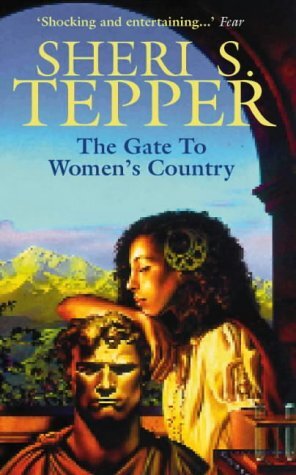
7.The Gate to Woman’s CountryBy Sheri S. Tepper
This complicated story takes place 300 years after a nuclear holocaust destroyed nearly everything. Men and women are divided. I chose this story because, while some might say that it is divisive in a “love it/hate it” way, it does ask interesting hypothetical questions. The biggest is, “Is all of this worth it?”
-Beth Tabler
About The Gate to Woman's Country
Tepper’s finest novel to date is set in a post-holocaust feminist dystopia that offers only two political alternatives: a repressive polygamist sect that is slowly self-destructing through inbreeding and the matriarchal dictatorship called Women’s Country. Here, in a desperate effort to prevent another world war, the women have segregated most men into closed military garrisons and have taken on themselves every other function of government, industry, agriculture, science and learning.
The resulting manifold responsibilities are seen through the life of Stavia, from a dreaming 10-year-old to maturity as doctor, mother and member of the Marthatown Women’s Council. As in Tepper’s Awakeners series books, the rigid social systems are tempered by the voices of individual experience and, here, by an imaginative reworking of The Trojan Woman that runs through the text. A rewarding and challenging novel that is to be valued for its provocative ideas.
Buy from Amazon

8.The Handmaid’s taleby Margaret Atwood
This book hardly needs an introduction from me, it has close to 40 years of readers across multiple generations and is now a wildly popular HBO series. The story follows Offred as she lives, struggles, and survives under a gender-based fascist regime. Offred’s body is not her own, and her struggles are more poignant now more than ever before.
-Beth Tabler
About The Handmaid's Tale
Offred is a Handmaid in the Republic of Gilead. She may leave the home of the Commander and his wife once a day to walk to food markets whose signs are now pictures instead of words because women are no longer allowed to read. She must lie on her back once a month and pray that the Commander makes her pregnant, because in an age of declining births, Offred and the other Handmaids are valued only if their ovaries are viable. Offred can remember the years before, when she lived and made love with her husband, Luke; when she played with and protected her daughter; when she had a job, money of her own, and access to knowledge. But all of that is gone now . . .
Buy from Amazon
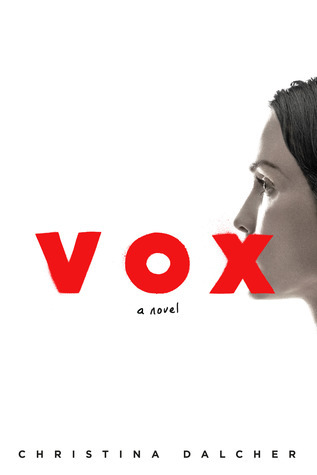
9.Voxby Christina Dalcher
A story where men control everything down to how many words are spoken from a women’s mouth. Women are silenced in a very real way.
-Beth Tabler
About Vox
Set in an America where half the population has been silenced, VOX is the harrowing, unforgettable story of what one woman will do to protect herself and her daughter.
On the day the government decrees that women are no longer allowed to speak more than 100 words daily, Dr. Jean McClellan is in denial—this can’t happen here. Not in America. Not to her.
This is just the beginning.
Soon women can no longer hold jobs. Girls are no longer taught to read or write. Females no longer have a voice. Before, the average person spoke sixteen thousand words a day, but now women only have one hundred to make themselves heard.
But this is not the end.
For herself, her daughter, and every woman silenced, Jean will reclaim her voice.
Buy from Amazon
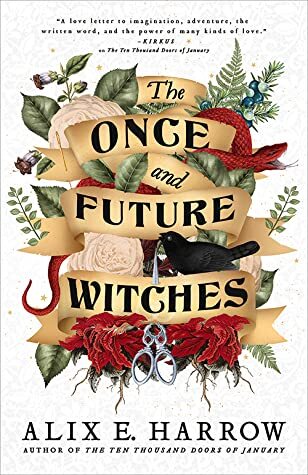
10.Once and Future Witchesby Alix E. Harrow
“The dragons were slain and the witches were burned and the night belonged to men with torches and crosses.”
In my humble opinion, Alix E. Harrow can do no wrong. This story is about suffragette witches. Three women who repair their torn relationships, step up and fight for women’s and witches’ rights in Salem Massachusets circa 1893.
-Beth Tabler
About Once and Future Witches
In 1893, there’s no such thing as witches. There used to be, in the wild, dark days before the burnings began, but now witching is nothing but tidy charms and nursery rhymes. If the modern woman wants any measure of power, she must find it at the ballot box.
But when the Eastwood sisters–James Juniper, Agnes Amaranth, and Beatrice Belladonna–join the suffragists of New Salem, they begin to pursue the forgotten words and ways that might turn the women’s movement into the witch’s movement. Stalked by shadows and sickness, hunted by forces who will not suffer a witch to vote-and perhaps not even to live-the sisters will need to delve into the oldest magics, draw new alliances, and heal the bond between them if they want to survive.
There’s no such thing as witches. But there will be.
Buy from Amazon
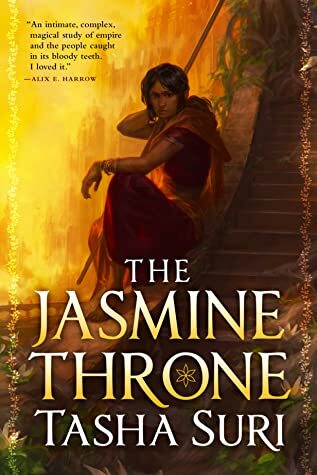
11.The Jasmine Throneby Tasha Suri
The Jasmine Throne is, more than anything, a story of the strength of women. Clever, strategical strength, such as Malini’s. The strength to survive and thrive despite extreme hardship and tragedy, like Priya. Even the strength to rebel in whatever way a person is able, like Bhumika. Alone, each woman is a force to be reckoned with. Together, they will shake the world.
I loved that each of them used their own strengths, and not one of them was ever the stereotypical “damsel in distress”.
-Jodie from WItty and Sarcastic Book Club
About The Jasmine Throne
Author of Empire of Sand and Realm of Ash Tasha Suri’s The Jasmine Throne, beginning a new trilogy set in a world inspired by the history and epics of India, in which a captive princess and a maidservant in possession of forbidden magic become unlikely allies on a dark journey to save their empire from the princess’s traitor brother.
Imprisoned by her dictator brother, Malini spends her days in isolation in the Hirana: an ancient temple that was once the source of the powerful, magical deathless waters — but is now little more than a decaying ruin.
Priya is a maidservant, one among several who make the treacherous journey to the top of the Hirana every night to clean Malini’s chambers. She is happy to be an anonymous drudge, so long as it keeps anyone from guessing the dangerous secret she hides.
But when Malini accidentally bears witness to Priya’s true nature, their destinies become irrevocably tangled. One is a vengeful princess seeking to depose her brother from his throne. The other is a priestess seeking to find her family. Together, they will change the fate of an empire.
Buy from Amazon
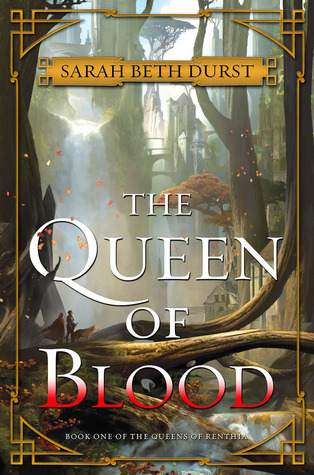
12.The Queen of Bloodby Sarah Beth Durst
So many books strip women of the femininity in an attempt to make them look strong, completely ignoring that women are strong already. The Queens of Renthia shows different kinds of strength. Daleina is hardworking and headstrong. Any character that is introduced as wanting to kick fate in the face is one I’m going to love.
The Reluctant Queen (book 2) introduces Naelin, whose power comes second to her desire to protect her children. The term “mama bear” grossly underestimates what Naelin becomes when she feels her children are threatened. There are many kinds of badass women, and Naelin shows a facet of female strength that isn’t often represented in fantasy.
-Jodie from WItty and Sarcastic Book Club
About The Queen of Blood
An idealistic young student and a banished warrior become allies in a battle to save their realm in this first book of a mesmerizing epic fantasy series, filled with political intrigue, violent magic, malevolent spirits, and thrilling adventure
Everything has a spirit: the willow tree with leaves that kiss the pond, the stream that feeds the river, the wind that exhales fresh snow . . .
But the spirits that reside within this land want to rid it of all humans. One woman stands between these malevolent spirits and the end of humankind: the queen. She alone has the magical power to prevent the spirits from destroying every man, woman, and child. But queens are still just human, and no matter how strong or good, the threat of danger always looms.
With the position so precarious, young women are chosen to train as heirs. Daleina, a seemingly quiet academy student, is under no illusions as to her claim to the throne, but simply wants to right the wrongs that have befallen the land. Ven, a disgraced champion, has spent his exile secretly fighting against the growing number of spirit attacks. Joining forces, these daring partners embark on a treacherous quest to find the source of the spirits’ restlessness—a journey that will test their courage and trust, and force them to stand against both enemies and friends to save their land . . . before it’s bathed in blood.
Buy from Amazon

13.Legacy of the Brightwashby Krystle Matar
“…you never really recovered, so much as you learnt to go on living even though you were falling apart.”—Krystle Matar, Legacy of the Brightwash
“And that’s what makes it so painfully, soulfully, and beautifully human. Brightwash uses fantasy like a safecracker’s tool to break its characters open and lay their contents out with the lightest of touches.
Matar’s prose is deep, mournful, and gorgeous, able to bring out both the deep physical and emotional wounds the characters experience throughout the story. And although the world is light on its fantastical elements, Matar manages to make it feel absolutely strange and familiar all at once – books like Caleb Carr’s The Alienist and China Miéville’s The City and The City come to mind. This is dark stuff written so beautifully that you can feel the grime on the walls and the grit in every crevice – both in the world and the characters themselves.”
-From the review by author G.M. Nair
About Legacy of the Brightwash
Follow the law and you’ll stay safe. But what if the law is wrong?
Tashué’s faith in the law is beginning to crack.
Three years ago, he stood by when the Authority condemned Jason to the brutality of the Rift for non-compliance. When Tashué’s son refused to register as tainted, the laws had to be upheld. He’d never doubted his job as a Regulation Officer before, but three years of watching your son wither away can break down even the strongest convictions.
Then a dead girl washed up on the bank of the Brightwash, tattooed and mutilated. Where had she come from? Who would tattoo a child? Was it the same person who killed her?
Why was he the only one who cared?
Will Tashué be able to stand against everything he thought he believed in to get the answers he’s looking for?
Buy from Amazon
The post Fantasy and Science Fiction That Features Strong Women or Woman’s Rights appeared first on BEFOREWEGOBLOG.
July 3, 2022
Review – MESS EFFECT: A NITPICKERS GUIDE TO THE WORLD THAT FELL APART by Shamus Young
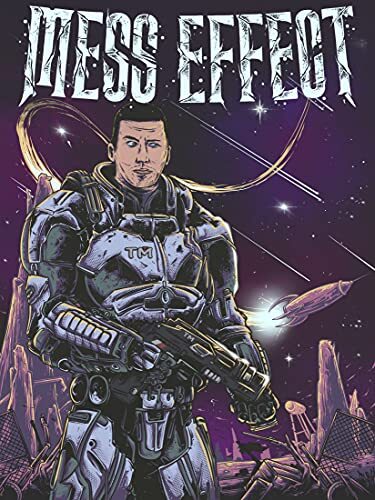 MESS EFFECT: A NITPICKERS GUIDE TO THE WORLD THAT FELL APART by Shamus Young (DM of the Rings) is a work that I picked up when I heard of his passing (RIP). I am a huge Mass Effect fan and an author so it seemed like an excellent book that would discuss the series from the perspective of its storytelling.
MESS EFFECT: A NITPICKERS GUIDE TO THE WORLD THAT FELL APART by Shamus Young (DM of the Rings) is a work that I picked up when I heard of his passing (RIP). I am a huge Mass Effect fan and an author so it seemed like an excellent book that would discuss the series from the perspective of its storytelling.
Specifically, it’s a discussion of how the once-beloved (and still beloved) series went off the rails in such a way that it got EA voted Worst Company of the Year. It also has a Mass Effect: Andromeda section.
You can tell how much you’re going to love this book or dislike it probably by the following statement: “Shamus really liked Mass Effect, he thought Mass Effect 2 was an utterly nonsensical mess with good characters, and Mass Effect 3’s failures are primarily due to 2’s nonsensical plot.” If you agree with that, it’ll be a lot of agreeing and if you disagree with that, then it will probably have some issues for you.
I’m a huge fan of Mass Effect 2 and think it’s the best of the trilogy. I recognize its flaws, however, and just because I disagree with an author’s interpretation doesn’t mean that I think the book is bad. Still, a lot of the middle part of the book was me going, “You don’t want to work for Cerberus because it’s icky bad evil but you’re a Spectre, which means that you’re supposed to work with morally ambiguous people. It’s part of being a spy.”
Shamus Young handles much of the book from the unconscious bias of playing a Paragon Shepard, IMHO, and that is something that he’s never really able to shed nor seemingly aware of. This isn’t necessarily saying he’s wrong, though. A huge chunk of the fandom played Shepard as a Paragon and Sole Survivor with the view Cerberus is absolute evil as well as a group that they would never work with even for the greater good. They also played a Star Trek-esque idealistic Shepard so the trilogy taking the stance the Citadel Council races aren’t necessarily humanity’s friends would also feel hugely disappointing. Others like the emphasis on realpolitic and betrayal that they’d argue, like me, were in ME to begin with.
Now is the above paragraph is something that makes sense to you and is the kind of thing you’d like to read, then this is absolutely the book for you. It’s a detailed discussion of the politics, world-building, storytelling choices, and ideas of Bioware’s sci-fi universe. It also very much takes the opinion that the retcons and deliberate forced morally ambiguity of the games as well as incompetence of the Council races were mistakes than choices. I LOVE this sort of thing even when I wish I could type up a bunch of response posts about how much I think he’s wrong.
I also think the book has one serious failure and that’s lacking an extensive discussion of the romances in the game. That is definitely not something Shamus cared about and probably imagined Bioware did fine on but they’re such an intrinsic part of the gaming experience that their lack of discussion is noticeable by its absence. He discusses all the characters but not their relationship to Shepard. Which is a shame as I’d love to hear him compare Ashley vs. Liara vs. Tali (or Garrus).
In conclusion, this is a book for hardcore Mass Effect nerds and those who strongly care about things like the economics of the Alliance or how the Turian Navy functions. It’s a fair and detailed work that, sadly, suffers a bit from the fact that he doesn’t include many arguments against his own points. I feel that would have benefited the book a bit more and made it feel more inclusive of alternate viewpoints. Still, we’ve lost a great writer and an even greater fan.
Read Mess Effect: A Nitpickers Guide to the World That Fell ApartReview – The Hand that Cast the Bone by H.L. Tinsley
Review of RIVER OF THIEVES by Clayton Snyder
The post Review – MESS EFFECT: A NITPICKERS GUIDE TO THE WORLD THAT FELL APART by Shamus Young appeared first on BEFOREWEGOBLOG.
#SPFBO8 Review and Cut – The Burnt Watcher by Keith Healing
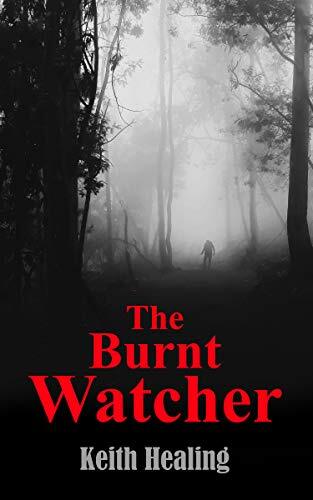 Book Blurb:
Book Blurb:The Excise exists to keep the world safe.
This is done in two ways.
First is the Judiciary.
It understands local law and applies it evenly.
The second is the Watcher.
It understands Fear and fights it mercilessly.
Five hundred years ago the old world burned and the Fear rose from the ashes and the Glass. Watchers knew the Fear and found the ways of fighting it, enabling the world to be built anew.
Now the Fear is a memory, a story to remind people why they should not build with stone. The Watchers have all but disappeared, remnants of a time that has passed.
But in a small village in the west of England a retired Watcher suspects that the Fear is not as distant as people believe.
My Review:As I was reading through this piece, there were areas that really pulled me in. If you are looking for a fast paced book, then this is not it, at least in the first section. It was a slow-moving book, almost too slow. While some books have information overload in the beginning, this one almost didn’t have enough.
Master Gray is a Watcher, having been chosen at a young age. While his parents were proud, there was still an element of danger, as he learned. Watchers tended to not last very long. Master Gray has lived a long life, retiring from being a Watcher, until he is called back to assist in a strange case.
While there are a lot of positives about this book, and can hold your attention, for the most part, I didn’t feel this one was strong enough to move on. I think that the slower start, is going to really hurt it. There are some areas where an editor’s finesse could help smooth out some rougher areas.
Overall, decent and interesting – and for those who love a good post-apocalyptic novel, then you will enjoy reading this one!
Read The Burnt Watcher#SPFBO8 – Review and Cut – The Trials Of Ashmount by John Palladino
#SPFBO8 -; Review and Cut – Debunked by Dito Abbott
The post #SPFBO8 Review and Cut – The Burnt Watcher by Keith Healing appeared first on BEFOREWEGOBLOG.
July 1, 2022
Review – NORTHERN WRATH by Thilde Kold Holdt
The women in the book are stalwart, heroic, and gritty. They are mothers, daughters, and wives, with plenty of heart and compassion, and conjointly fearsome warriors, leaders, and influencers.
As my May 2022 #DebutFantasy reading winds down, I ventured back into the world of Norse and Norse-inspired historical- fantasy, and picked up “Northern Wrath”, Book One of “The Hanged Gods Trilogy” by Thilde Kold Holt. What did I think of this book?
Let’s put it to you this way: I have never cared so much about a character who was already dead.
The story follows the main POVs of Einer, Hilda, and Ragnar, inhabitants of the village of Ash-Hill, in the cold Viking north, in the land of Jutland (ancient Denmark), within Midgard – the realm of mortals, and worshippers of the old Norse Gods. There are several additional POV chapters, including those dedicated to Siv, Tyra, Sigismund, Muspeldottir, Thora, Finn, and Buntrugg. Yet those first three characters mentioned are permitted the bulk of the narrative voices, and it is their fates that likely the reader will be most concerned with.
The book commences with Einer’s POV, and it is within the first few pages the reader sees young nobleman Einer (maybe) having impossibly slain a huge bear during a berserker fit, and having no memory of HOW he accomplished the incredible feat.
Ragnar, Hilda’s father, is old and dying, and from his daughter’s point of view, his death will not be a good one, because he will not die in battle, with honour, like a true warrior. Furthermore, Ragnar has forbidden Hilda, who aspires to be a hero, the chance to be a shieldmaiden, in order to keep her safe. Hilda chaffes at being held back, but the opportunity for glory will come sooner than she expects.
After Ragnar dies, his soul must traverse The Darkness towards Helheim, the Norse underworld. But it will be a horrible journey, even for someone who is dead. “Death, Pain, Fear.” Remember those three words, for they will haunt you as you read the shocking POVs of Ragnar, and you will wonder if there is a fate far worse than merely dying.
Meanwhile, Einer and Hilda, and their Norse way of life, and worship of the old Gods, are threatened by the danger of invading Christians. The Gods themselves are imperilled too by other powerful forces and the advance of Christianity, but they will not be easily vanquished, and when Gods are fighting for existence, the consequences can be devastating to humans.
Nor will the Jutlanders suffer an attack on their village without seeking bloody revenge. War will follow, intertwining ethereal and mortal combat, heroes will rise, and the world may just come to an end in the process.
So, let’s discuss the character work in the novel. With an abundance of cast members in a novel, sometimes characterization can be diminished. Overall Holdt did a good job of crafting engaging characters, and she warrants special praise for how incredible her female characters were (Siv was my favourite of all the characters in the book, followed closely by Ragnar).
The women in the book are stalwart, heroic, and gritty. They are mothers, daughters, wives, with plenty of heart and compassion, and conjointly fearsome warriors, leaders, and influencers. While I wished for a bit more exploration of their inner feelings and motivations at times, the characters were all certainly realistic, and very intriguing.
This book reads VERY quickly for a 600+ page novel, with a plot that spares no opportunity for pause, and I compulsively read this book in the span of four days: I could not put it down. This book teems with mythology, indomitable warriors, vengeful, traitorous gods, and destiny. So please don’t be scared by the book’ chonkiness: fans of the fast read, come hither.
Connoisseurs of battle scenes such as John Gwynne, Miles Cameron, and Bernard Cornwell would likely applaud the ferocious and thrilling clashes that Thilde Kold Holdt depicts in “Northern Wrath”. They are absolutely top notch: brutal, visceral, realistic, with the kind of build-up and tension (and attempts at character development PRIOR to the battle so that one cares about the outcomes for the players involved) before the conflicts that I require to be truly invested when the blood starts spraying. High, high accolades for Holdt in this regard.
I loved the fact that in many of the fights, the Gods were by no means passive bystanders, watching from the distance, detached from the momentous clashes. The Norse deities are omnipresent throughout the book, including the battles – either physically present, or imposing their powers to manipulate the payoff. But are these gods truly infallible or invincible, or will they too suffer their losses, just like their human subjects?
This book is very grim, very dark, and very violent. It is beautifully written, but not for the squeamish. Still, there are moments of hope peaking through the clouds. At the very least, readers can pray that those of their favourite characters who survive, will have the mental and physical stamina left to be able to fight another day, in the inevitable battles to come, further on in the series.
The sense of wonder, enchantment, and otherworldly powers permeate the novel, as Holdt’s impeccable research and writing skill brings the reader up close and personal into fascinating elements of Norse cosmology, as we feel completely immersed in that world. The worldbuilding is fantastic, and Holdt’s descriptive prose will make the reader feel as if they too – like our characters – have Yggdrasil, or the deck of a ship, or the slick of blood from a battle, underfoot.
The customs, weapons, religious rites, and culture of the Norse are on full display, and Holdt has created a fully realized, vivid world that will splash new paint on old legends, and make them seem fresh and inventive.
If you like Vikings, the Norse sagas replete with gods such as Odin, Loki, and the like, mystery, honour, tragedy, darkness, desperate last stands, heroic quests, brilliant storytelling, and characters that you will care about, this is your type of book; it certainly was mine!
4.75 stars for “Northern Wrath”! Very much looking forward to “Shackled Fates”, the next book in the series!
Read Northern WrathThe post Review – NORTHERN WRATH by Thilde Kold Holdt appeared first on BEFOREWEGOBLOG.
Graphic Novel Review of “Mouse Guard Fall: 1152” by David Peterson

“Take no duty of the Guard lightly. Friends must not be enemies
Just as enemies must not be friends.
Discerning the two is a life’s work.”
― David Petersen
From the publisher,” The forest is a dangerous place for any animal, especially one as small as a mouse. In the past, the mouse world endured a tyrannical Weasel Warlord until a noble band of mouse soldiers fought back. Ever since the Mouse Guard has defended the paces and prosperity of its kingdom. For generations, this league of scouts, weather-watchers, trailblazers, and protectors has passed won its knowledge and skills.
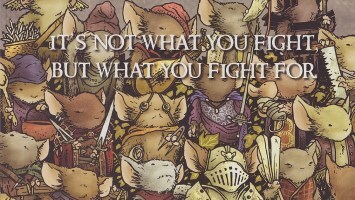
Now three of the Guard’s finest have been dispatched. The mission seems simple: They are to find a missing mouse, a grain merchant who never arrived at his destination. But when they see him, they make a shocking discovery—one that involves a treacherous betrayal, a stolen secret, and a rising power that has only one goal: to bring down the Guard…”
“The best solution is always found at the point of my sword.”―Saxon’s belief
If you were walking around a bookstore and came across this book sitting on a shelf you would think that with its cartoonish depictions of animals wielding swords and bright colors that it was a children’s book. You could not be further from the truth. This is a very nuanced story about betrayal, bravery, endurance, and sincerity; it is most certainly not a children’s story.

artstation.com
To start off, imagine what it is like to be a mouse in the first place they are small, weak, and fearful. Mice are prey animals in nature. Their entire lives are spent in fear of the unknown next predator around the bend. Almost every creature in the forest could be a predator to them. In response, you build your home in the most protected and sheltered spot you can find and hope for the best. Now imagine you are a guard mouse. You are weak and small by nature. However, you have learned to be strong because you have to be. You must be brave because the smaller you are, the more bravery means and there are mice to protect. Thus flows the story of mice who are bravely sent out into the forest to protect the weaker.
Stylistically, the panels are superbly drawn. The illustrations look as if they glow from within like light shining through the trees in autumn. Wind could rush through my room as a read this and I would not be more convinced that it was fall. The illustrator completely nailed what fall is supposed to feel like.

I would recommend this to anyone over the age of ten. I think if a child tried to read this before that age, much of the subtleties would be lost on them. But, I would especially recommend this to any comic book/graphic enthusiasts out there. This is a graphic novel that graphic novel lovers love.
Read Mouse Guard Fall 1152Graphic Novel Review – The Boys by Garth Ennis and Darick Robertson
The post Graphic Novel Review of “Mouse Guard Fall: 1152” by David Peterson appeared first on BEFOREWEGOBLOG.
REVIEW – THE BLADE ITSELF BY JOE ABERCROMBIE
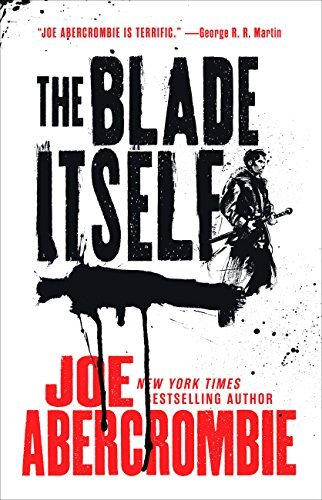 What it is About?
What it is About?The first novel in the First Law Trilogy and debut fantasy novel from New York Times bestseller, Joe Abercrombie.
Logen Ninefingers, infamous barbarian, has finally run out of luck. Caught in one feud too many, he’s on the verge of becoming a dead barbarian — leaving nothing behind him but bad songs, dead friends, and a lot of happy enemies.
Nobleman, dashing officer, and paragon of selfishness, Captain Jezal dan Luthar has nothing more dangerous in mind than fleecing his friends at cards and dreaming of glory in the fencing circle. But war is brewing, and on the battlefields of the frozen North they fight by altogether bloodier rules.
Inquisitor Glokta, cripple turned torturer, would like nothing better than to see Jezal come home in a box. But then Glokta hates everyone: cutting treason out of the Union one confession at a time leaves little room for friendship. His latest trail of corpses may lead him right to the rotten heart of government, if he can stay alive long enough to follow it.
Enter the wizard, Bayaz. A bald old man with a terrible temper and a pathetic assistant, he could be the First of the Magi, he could be a spectacular fraud, but whatever he is, he’s about to make the lives of Logen, Jezal, and Glokta a whole lot more difficult.
Murderous conspiracies rise to the surface, old scores are ready to be settled, and the line between hero and villain is sharp enough to draw blood.
Unpredictable, compelling, wickedly funny, and packed with unforgettable characters, The Blade Itself is noir fantasy with a real cutting edge.
My ThoughtsVery few authors I have read can pull off making the astoundingly three-dimensional fictional characters so compelling that one actually longs that one could sit down and have an adult beverage with these made-up rogues in a tavern and listen to them for hours talking about their life stories.
For me, Glotka is one of the best protagonists (of several in the story) in modern fantasy fiction. Somehow, although the author, Abercrombie, has been heralded by many pundits as the anointed king of “grimdark” fantasy, despite his extremely bloody and realistic fight scenes, images of vicious torture and maiming, even rape, the dichotomy was that I found “The Blade Itself” uplifting and in many ways positive and even tender in terms of its overall tone.
Overall, the book was simply incredible. I love character driven fiction and Abercrombie does not disappoint. I’ve heard criticisms that the entire “The First Law” series is somewhat devoid of good world building but I did not find that to be the case. What I did find was that, while the world created in the novel and the series were excellent, but the characters were SO good that the world building aspect became very secondary, unlike some other works were the magical system, geography, history, etc can sometimes overwhelm and outshine the characters and even the plot.
Abercrombie has become one of my favourite writers and all his accolades at being near the top of the contemporary fantasy writer pecking order is well deserved.
Read The Blade ItselfReview -; The Hand that Cast the Bone by H.L. Tinsley
The post REVIEW – THE BLADE ITSELF BY JOE ABERCROMBIE appeared first on BEFOREWEGOBLOG.
June 30, 2022
#SPFBO8 – Review and Cut – The Trials Of Ashmount by John Palladino
Palladino’s novel, The Trials of Ashmount is a promising start to his fantasy series, and a deliciously brutal, grimdark world.
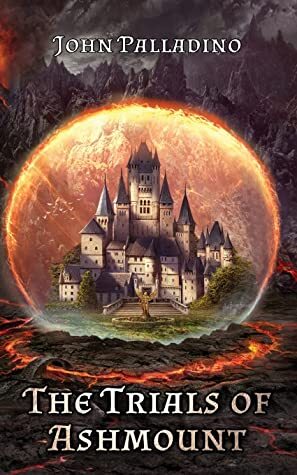 Cedain lies on the brink of war and destruction. In a brutal, unforgiving world, where betrayal, violence, and self-serving politics are an everyday occurrence, five individuals must overcome their own tragedies and weaknesses to survive. And at the centre of all this is Ashmount, the University of Arcanical Arts, which is dedicated to the teaching of the five branches of magic.
Cedain lies on the brink of war and destruction. In a brutal, unforgiving world, where betrayal, violence, and self-serving politics are an everyday occurrence, five individuals must overcome their own tragedies and weaknesses to survive. And at the centre of all this is Ashmount, the University of Arcanical Arts, which is dedicated to the teaching of the five branches of magic.
John Palladino has created a vast and varied world for our characters to inhabit. One of my favourite aspects of the fantasy genre is world-building and Palladino has that in spades. Each of the five main characters each inhabits a different part of Cedain, and the landscapes, peoples, and cultures are wonderfully realised. The idea of the university positioned under an active volcano, surrounded by a powerful magical shield is fantastic, the front cover illustrates this brilliantly. Another aspect of world-building Palladino did very well, were the magic systems. They were well thought out and integrated into the story organically.
What is also apparent after reading through the first few chapters, each chapter a character POV, is that Palladino inhabits the grimdark sub-genre and this is evident as we are introduced to our five main protagonists, Edelbrock, Villic, Sera, Kelden, and Demri. The two standout characters for me were Villic, a nomad warrior who discovers that a magical being lives within him, and Kelden, a young man who travels to Ashmount to see if he has the Trace, the ability to use magic. Both characters had the most engaging story, and their chapters had good pacing and dialogue. Edelbrock’s story, on the other hand, a noble fallen from grace who loses everything he owns and is thrown into a form of gladiator games, felt a little cliché. It’s a trope I have seen done once too often and therefore I didn’t engage with Edelbrock’s storyline as much.
Palladino’s prose, for the most part, is fluid, making for an easy read. On occasion I found his writing a little herky-jerky and found myself having to go over lines again. But where John excels at is dialogue. His sardonic humour, and by extension, his character’s humour, makes for some thoroughly entertaining dialogue. One particularly moustache-twirling character, Scayde Haklon, was an absolute devilish delight to read with some scene stealing moments.
Palladino’s debut novel is a promising start to his fantasy series, and he has created a deliciously brutal, grimdark world, filled with a whole horde of colourful characters. If you are a fan of grimdark fantasy, you will lap this up like a cat to milk. When you read the glossary at the beginning of the book, and it’s titled ‘People Who May Die’ you know you are in for a ride.
Whilst this was an enjoyable, fun read for me, there were a few things I didn’t connect to, so unfortunately this is a cut.
Read The Trials Of AshmountRead Other SPFBO8 Entries#SPFBO8 Review and Cut – The Inquisitor by H.C. Harrington
#SPFBO8 Review and Cut – A Deadly Bloom by Kody Boye
The post #SPFBO8 – Review and Cut – The Trials Of Ashmount by John Palladino appeared first on BEFOREWEGOBLOG.
Review – The Hand that Cast the Bone by H.L. Tinsley
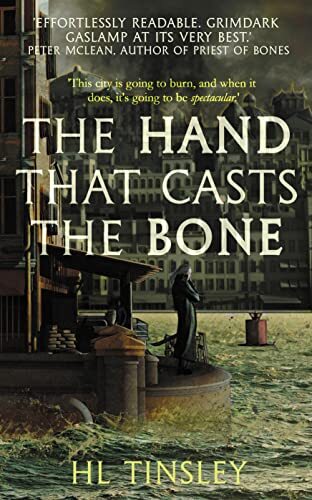 I received an ARC of “The Hand that Casts the Bone” in exchange for an honest review. In addition, I was honoured to be a sensitivity reader for this book.
I received an ARC of “The Hand that Casts the Bone” in exchange for an honest review. In addition, I was honoured to be a sensitivity reader for this book.
Here is my honest review of “The Hand That Casts the Bone”. Thank you again H.L. Tinsley for the privilege of being able to read it.
“That was the thing, when you cast a bone into the dog pit and watch the hounds fight; it wasn’t the strongest dog that won. It was the hand that cast the bone.”
In “The Hand That Casts the Bone”, H.L. Tinsley only builds on her growing reputation for outstanding character development, awesome action sequences, haunting prose, gritty dialogue, and very authentic world-building. Yet, perhaps what is beginning to set Tinsley apart from other great writers the most is her absolutely irresistible opening lines to her books.
The first few lines of “We Men of Ash and Shadow” have become legendary in grimdark fantasy circles as one of the most memorable openings in these types of books. I am sure a lot of Tinsley’s fans were waiting with anticipation to see if Tinsley could deliver another phenomenal opening salvo. Boy did she ever come through in stellar fashion with “The Hand That Casts the Bone”, as you can see from below excerpt:
“There was an indisputably distinct smell to the Hook. Downwind the neighbourhood had the aroma of an old wet dog. Upwind wasn’t much better. Given that the city had been unseasonably warm for weeks, there was no longer anywhere you could escape it. The sun had rendered the area so pungent you could taste the smell, and John Vanguard was only responsible for half of it.”
But Tinsley’s writing is about so much more than great opening lines such as the aforementioned. As hinted in the passage above, Vanguard is back, and still taking on the worst that society has to offer. The former military officer turned mercenary, whose talents include a bit of magic, a lot of brutality, and keeping a handy backpack with sparse contents save the knife he uses to bring justice to those who few will miss by their deaths, returns in the second installment of the series.
Yet Vanguard is even more down on his luck than ever, and for someone who was barely living above vagrancy, that’s saying a lot. No longer with even a bathtub to call home, Vanguard, the killer with a heart of gold, is forced to turn to an old enemy, the ruthless and clever crime boss Mandego, to survive, and recover from wounds sustained in an assassination attempt gone wrong.
The crime lord, who talks to his dead lover’s head, kept in a jar, has his sights set squarely on elbowing the other mob bosses out of the way, and ruling supreme over illicit activities in the region. Mandego sees a way Vanguard can be of use, and trades caring for Vanguard in exchange for the mercenary’s services. So Vanguard swaps working for one tyrannical mob boss – Felix Sanquain, who has now put a price on Vanguard’s head – to work for another in Mandego.
Meanwhile, said Felix Sanquain, the slick, urbane, puppet-master ruler of D’Orsee, is still pulling the strings of everyone in his sphere of influence, and even those beyond it. Sanquain is trying to plant a high level politician in place that will be loyal to him, and serve his agenda, since the politician’s mother and deceased father are indebted to Sanquain financially.
But this move by Sanquain is just part of a much larger plan to propel the cunning and scheming captain to being supreme military leader of the surrounding cities. Moreover, Sanquain still has the relentless and unstoppable killer (and young protegee-turned-foe of Vanguard), noble-born Tarryn Leersac, just barely on a leash, and able to help Sanquain in his plans for domination.
But Tarryn is not someone easily controlled, and he has his own demented, sinister plans. Part of those plans leads him on a crash course with his old mentor, Vanguard. But now the pupil’s talents have exceeded the teacher’s, and things have never looked so bleak for Vanguard’s survival, with, inevitably, a decisive, brutal confrontation against Tarryn looming.
While all of this is occurring, former high society darling, the goodhearted Argent Cooke, is trying to make good on his plan to bring decency and order, oust the despotic crime bosses and secure the city for the people, and the common good. But while Cooke courts his influential cousin Javier to assist him, Cooke’s supporters who include favourite characters from the previous book, like Henriette, Carmen, Kosioc, Demetrio, struggle just to stay alive in the tinder-box that is D’Orsee.
Tensions continue to escalate, as gang wars and the ambitions of men like Mandego and Sanquain threaten to rip a city already in turmoil apart completely. And while Henriette is harbouring a secret that has a definite impact on Vanguard, a woman from Vanguard’s past is returning, that will force the beleaguered mercenary to confront a past more painful than bullets and knife thrusts.
In “The Hand That Casts the Bone”, Tinsley has managed to keep her prose lean, tight, impactful, delicious, without wasting any words, and yet still spin a tale that is as immersive and ambitious as “We Men of Ash and Shadow, though this second book is a good hundred pages longer than the first entry.
You feel like you can rub your fingers together and touch the grime, moral decay, and desperation that oozes off the pages, when you read Tinsley. Grimdark fans will be satiated on the feast of realism and pragmatism that Tinsley brings to fantasy – it is truly well done.
Once again, Tinsley strikes just the right tone and mood, and the tension is revved up high throughout the novel, and maintained even in the quieter, more reflective moments. That brooding, melancholy, and creepy vibe, infused with poignant hope and optimism, redemption, and catharsis, that I found in the first book, carries forward in this book. Along with that vibe, there were some passages of really great dark humor from the witty Tinsley that elicited a few belly laughs from me as I read it.
Be warned though, this book is bleak at times, some of the scenes will tear your heart out, and Tinsley will force you to enjoy every minute of your despair, and angst over the fate of major, and even minor characters. Be prepared for all the trauma, blood-letting, and psychological issues that will surface in the book.
Additionally, Tinsley bravely intensifies her focus on heavy subject matter, such as racism, injustice, and abuse, all spun adroitly within the narrative, making this novel even more poignant than the previous one. She handles all those sensitive issues with aplomb, and keeps the reader invested at all times, evoking strong emotions.
This book reads as quickly as its predecessor, though it’s longer, and I was completely unable to put it down for any length of time – it was so incredible and held me raptly in it’s spell. Few authors can pace a book so effectively. You’ll want to stop and re-read, in admiration of Tinsley’s lovely writing, but you won’t be able to at the first go – you’ll just want to compulsively keep reading to see what happens next.
The jewel of reading Tinsley, and this series, is still Vanguard, the emotional wreck on the inside who always seems in control on the outside. Vanguard’s innate humanity and integrity, despite some of the horrible things he has done, are clearly evident.
As I said in my review of “We Men of Ash and Shadow”, Vanguard should ultimately go down as one of Grimdark fiction’s great protagonists, right up there with Jorg Ancarth and Sand an Glokta. There are heaps of dirt and foulness on the surface of the man, but underneath there’s plenty of shine, and the complexity of the character is only becoming more fascinating, as more reveals about him come out as the series moves forward.
After reading “We Men of Ash and Shadow” I stated Tinsley had established herself, very quickly out of the gate, as grimdark royalty. “The Hand That Casts the Bone” only solidifies this position, for me, and I don’t see Tinsley surrendering her crown anytime soon.
Five plus stars easily for “The Hand That Casts the Bone”! A simply terrific read!
Read The Hand that Casts the BoneReview – Ex-Heroes by Peter Clines
Review of WHERE LOYALTIES LIE by Rob J. Hayes
The post Review – The Hand that Cast the Bone by H.L. Tinsley appeared first on BEFOREWEGOBLOG.
June 29, 2022
Cover Reveal – The Alchemy of Sorrow
“Here be dragons and sorcery, time travel and sorrow.”
Book Description:
Here be dragons and sorcery, time travel and sorrow.
Vicious garden gnomes. A grounded phoenix rider. A new mother consumed with vengeance. A dying god. Soul magic.
These stories wrestle with the experience of loss—of loved ones, of relationships, of a sense of self, of health—and forge a path to hope as characters fight their way forward.
From bestsellers and SPFBO finalists to rising voices, 13 exceptionally talented authors explore the many facets of grief and healing through the lens of fantasy and sci-fi.
About the cover illustration:For the cover of The Alchemy of Sorrow, we wanted to create an image that was evocative of all the stories contained within its pages, without being specific to any single one of them.
Since most of our stories have female protagonists, we chose to center the image on a grieving woman. We wanted her to be a woman of color, to celebrate the diversity of our stories and authors, and to represent the majority of the world’s population. We asked the artist to portray her standing among ruins, with her grief transmuting into light, which in turn begins to transform her surroundings.
We also took inspiration from the Japanese practice of kintsugi – in which a fractured piece of pottery is restored using precious metals mixed into the lacquer so that the item’s cracks become a beautiful feature of the piece rather than a flaw to be hidden away – and we asked if the woman’s skin could feature cracks lined with gold.
After receiving Zoe’s gorgeous artwork, the task then went to Virginia to design a text layout that didn’t detract from it. She did her best to convey all the information necessary and make it legible without obscuring too much of the artwork.
From those sketchy details, Zoe Badini conceived of this stunning image of a woman standing before a broken stained-glass window, with light coming from the cracks in her skin. The light forms swallows, a symbol of rebirth, and renews the dying jasmine around her.
Featuring the following authors! M.L. Wang, K.S. Villoso, Intisar Khanani, Sonya M. Black, Angela Boord, Levi Jacobs, Krystle Matar, Virginia McClain, Quenby Olson, Carol A. Park, Madolyn Rogers, Rachel Emma Shaw & Clayton Snyder M.L. Wang, K.S. Villoso, Intisar Khanani, Sonya M. Black, Angela Boord, Levi Jacobs, Krystle Matar, Virginia McClain, Quenby Olson, Carol A. Park, Madolyn Rogers, Rachel Emma Shaw & Clayton Snyder M.L. Wang, K.S. Villoso, Intisar Khanani, Sonya M. Black, Angela Boord, Levi Jacobs, Krystle Matar, Virginia McClain, Quenby Olson, Carol A. Park, Madolyn Rogers, Rachel Emma Shaw & Clayton Snyder M.L. Wang, K.S. Villoso, Intisar Khanani, Sonya M. Black, Angela Boord, Levi Jacobs, Krystle Matar, Virginia McClain, Quenby Olson, Carol A. Park, Madolyn Rogers, Rachel Emma Shaw & Clayton Snyder M.L. Wang, K.S. Villoso, Intisar Khanani, Sonya M. Black, Angela Boord, Levi Jacobs, Krystle Matar, Virginia McClain, Quenby Olson, Carol A. Park, Madolyn Rogers, Rachel Emma Shaw & Clayton Snyder M.L. Wang, K.S. Villoso, Intisar Khanani, Sonya M. Black, Angela Boord, Levi Jacobs, Krystle Matar, Virginia McClain, Quenby Olson, Carol A. Park, Madolyn Rogers, Rachel Emma Shaw & Clayton Snyder


Pre-order link for ebooks:
https://books2read.com/AoS
Pre-order link for audiobooks:
https://books2read.com/AoS (currently not available for pre-order in audio but it will be in the next few months)
Print pre-orders coming soon!
The post Cover Reveal – The Alchemy of Sorrow appeared first on BEFOREWEGOBLOG.

